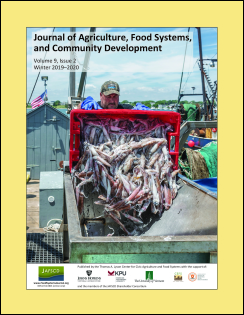Making a Market for On-farm Food Loss
Exploring Food Banks as a Market for Southeastern Produce
DOI:
https://doi.org/10.5304/jafscd.2020.092.014
Keywords:
Farms, Food Banks, Food Waste, Surplus, ProduceAbstract
Reducing food waste across the supply chain is one means to more efficiently utilize natural resources and potentially divert unutilized food to the food-insecure. Food banks are the primary institution by which this transfer occurs in the U.S. Over the past 20 years, growth in the number of pounds distributed annually by food banks has been accompanied by a focus on the nutritional quality of the food distributed. This shift has included an increase in sourcing of fresh produce directly from growers, with anecdotal evidence that some food banks have market-based relationships in which food banks pay growers and even forward contract for product. The current study sought to examine the prevalence of these relationships for the purpose of evaluating food banks as a market channel for farmers’ surplus and cosmetically imperfect produce. The authors collected data on market relationships between food banks and produce farmers through interviews with food bank operators in 13 southeastern U.S. states. Based on interviews with 24 individuals representing 16 food banks, food bank associations, and regional nonprofit produce distributors serving food banks, we find payments from food banks to farms to be a widespread practice. Eleven of the 13 states (and 14 of the 16 food banks) reported paying growers either directly or via Feeding America’s online Produce Matchmaker system. Interviews also revealed sourcing managers’ expectations that compensating growers could be a “win-win” strategy for both food banks and growers. Such practices are supported by infrastructure commitments from Feeding America, a network of food banks and pantries which includes 80% of food banks in the U.S.
See the press release for this article.
Metrics
Downloads
Published
How to Cite
Issue
Section
License
The copyright to all content published in JAFSCD belongs to the author(s). It is licensed as CC BY 4.0. This license determines how you may reprint, copy, distribute, or otherwise share JAFSCD content.













